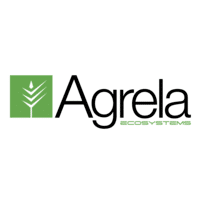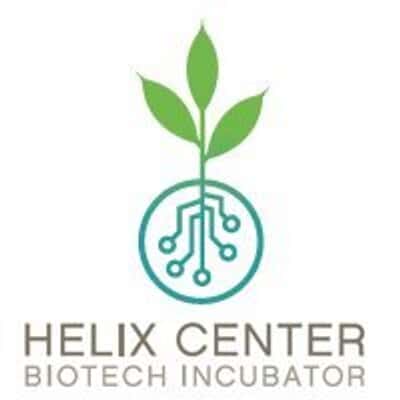Donald Danforth Plant Science Center
EQ examines the Danforth Center’s activities, such as outreach and research. We address why the Danforth Center is well positioned for building the new economy which the St. Louis region needs to be a major player in twenty-first century farming, nutrition, and economy.
The Danforth Plant Science Center is an anchor of 39 North, one of four St. Louis-area innovation districts, which also include CORTEX and the Downtown North Insight District. Nestled on Warson Road in suburban Creve Coeur near St. Louis AgTech startups, such as Benson Hill, CoverCress, NewLeaf Symbiotics and other enterprises of the new St. Louis, the Donald Danforth Plant Science Center is a showcase of intellectual capital and entrepreneurial activity.
Founding
It was founded in 1998 by Dr. William Henry Danforth, the chancellor emeritus of Washington University in St. Louis. Startup capital included a $60 million grant from the Danforth Foundation and a $50 million gift from the Monsanto Fund. Other initial support included Monsanto’s donation of 40 west county acres and $25 million in contribution tax credits from the State of Missouri.
The Danforth Center has an ambitious agenda: to make our world a better place by developing more nutritious food for its people. Along the way, it will make the St. Louis region a global epicenter of the agrifood tech economy and an innovation cauldron.

Mission and Vision
The Danforth Center connects great ideas, researchers, incubation, and capital to form new companies. More than 400 employees from 30 countries toil under its roof. Their mission is to “improve the human condition through plant science,” and their goal is to move scientific advances to the marketplace.
“We seek to feed the hungry and improve human health, while preserving and renewing our environment. Through our endeavors, we will enhance the St. Louis region as a world center for plant science.”
These Danforth Center plant scientists work to increase agricultural productivity to sustainably feed nearly 10 billion people by the middle of the century, and to do so with a lower environmental footprint and with fewer natural resources.
Research Park
The Center hosts world-class research across many fields in plant science, ecology, agronomy, and the like. Current projects span migrating agriculture to a more prairie-like, sustainable paradigm to food security to developing strains of cereal crops better able to withstand extreme climate events, such as floods and droughts. Other research efforts include the use of advanced technologies and drones for remote sensing, thus enabling early problem detection while minimizing water and fertilizer usage.
A listing of various research efforts currently underway as detailed in The Leaflet (a newsletter for donors detailing the Center’s work and focus) include:
In addition, the Danforth Center won a grant from the US Department of Commerce’s Economic Development Administration (EDA) to develop a Center for AgTech and Applied Location Science and Technology (CATALST). The aim is to improve precision agriculture —applying inputs and making interventions only when and where needed— by combining St. Louis strengths in agtech and geospatial science. CATALST is being undertaken in partnership with BioSTL and T-REX, other critical St. Louis-area innovation and entrepreneur development resources.
The core facilities at the Danforth Center accelerate discovery by providing access to state-of-the-art instrumentation and technology with which to expand and attain their research endeavors. Facilities include Advanced Bioimaging, Data Science, Plant Phenotyping, Plant Growth, Proteomics and Mass Spectrometry, Plant Transformation, and X-ray CT Imaging. High-quality services are offered to both internal and external clients.
Enterprise Formation and Entrepreneurship
As noted above, a hallmark of the Danforth Center is nurturing plant science entrepreneurship and firm creation, and the region has become a leading hub for the commercialization of agriculture and related technologies. For example, the BioResearch Development Growth Park (BRDG), established in 2009, supports early- to mid-stage startups and international companies that have established their North American headquarters in the St. Louis area It presently houses the headquarters of Benson Hill, 15 “home-grown and transplanted” enterprises, the St. Louis Community College’s biotechnician training program, and offers access to the Danforth Center’s 54,000 square feet of greenhouse space and 270,000 square feet of laboratories, office space, and shared amenities.

The Helix Center, located a few blocks away and operated by the St. Louis Development Partnership, is more focused on initial stage startups and offers 33,000 square feet of laboratories and office space.
The Danforth Center, BRDG Park and the Helix Center are located in 39 North, a 600-acre innovation district that is also home to Bayer Crop Science, CoverCress, and the Yield Lab agtech startup accelerator. By connecting regional assets, improving mobility, creating development opportunities and additional green space, 39 North will enhance the region’s ability to grow, attract and retain companies and top talent.
A “remote, virtual” member of the Center’s innovation community includes the Wells Fargo Innovation Incubator (IN2), located in Golden, Colorado, in a partnership that also includes the US Department of Energy’s (DOE) National Renewable Energy Laboratory (NREL). IN2 provides resources for clean-energy startups, with a core focus on agriculture and agtech startups. Its function is to “de-risk innovations and speed clean technologies to commercial markets.”
Agriculture and agtech interests include crop nutrition, indoor agriculture, crop protection and enhancement, and new crop discovery/breeding. Another area of interest is that of using cover crops to sequester atmospheric carbon underground, both ameliorating climate change and building new topsoil.
Outreach
The Center broadly reaches out to the St. Louis community and beyond. Efforts often focus on getting poor and minority young people excited about pursuing a STEM career.
For example, the Center works and co-hosts events with the Jackie Joyner-Kersee Center, situated in nearby poor and majority African American East St. Louis, Illinois. The JJK Center was founded and is actively led by the eponymous US Olympic star and gold medalist, who grew up and continues to reside in East St. Louis. The Danforth Center involves these poor and underserved young people with plant science research, allowing them to team with world-class scientists and researchers.
Many of them will take away an “I can do this” confidence and will find pursuing university admission or other STEM career fields less intimidating. They will be well served by the St. Louis-area labor market, in which bioscience jobs are both over represented and generously compensated.
Providing Startup Capital
Money, as well as smart, enthusiastic people and great ideas, is needed to create new firms. In the St. Louis region, startup capital is provided for agtech via a combination of Angel Investors, Venture Capitalists, and private grants.
BioGenerator, the investment arm of BioSTL, has invested $19 million in 73 firms as of 2018. The St. Louis Development Partnership provided $3 million for the Helix Fund (funded with St. Louis Port Authority revenue).
Additional seed capital is supplied by ArchGrants, a nonprofit. The local venture capital community, including Cultivation Capital, Yield Lab, TechAccel, and Lewis and Clark Ventures, is likewise active in this market space. In addition, various conferences and exhibitions provide outreach to non-local sources of capital, including Foreign Direct Investment (FDI).
Relocate Your Startup to St. Louis
Aker Technologies provides an example of how St. Louis and other resources come together to support new firm creation. Originally based in Chicago, Illinois, Aker relocated to St. Louis after securing $2.6 million in new funding. The startup’s funding round was led by Lewis and Clark Ventures, with additional funding being provided by Flyover Capital and Central Illinois Angels.
Aker develops and markets TrueCause, a remote sensing technology addressing crop pest and disease diagnostics to improve yields and stem losses. Aker was one of five startups competitively selected by the Danforth Center and IN2.
Type:organization
locations id:false
cohorts id:1011
industry id:false
org_funds_raised_amount:
org_funds_raised_amount_test: gt
org_annual_revenue_amount:
org_annual_revenue_amount_test: gt
org_number_of_employees:
org_number_of_employees_test: gt
org_looking_for_funding: false
org_order_by_value: name
org_order_sort: ASC
post_order_by_value: date
post_order_sort: ASCnumber_of_results: 10style: simple


